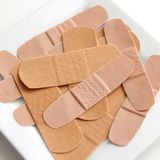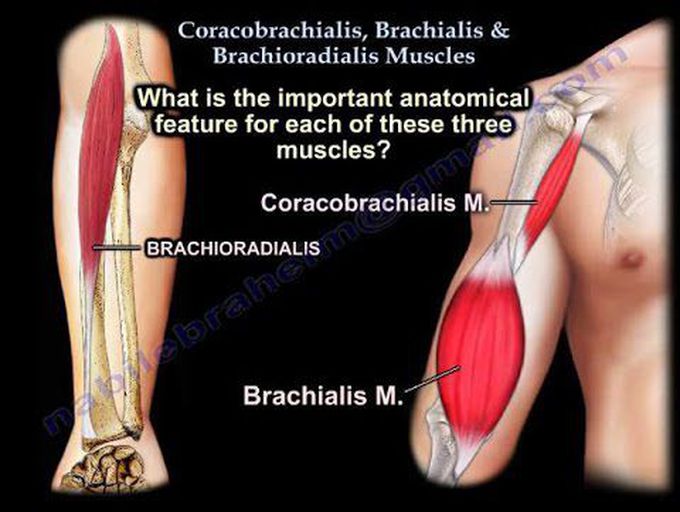


Coracobrachialis Brachialis Brachioradialis - Everything You Need To Know - Dr. Nabil Ebraheim
Dr. Ebraheim’s educational animated video teaches about the anatomy of the Coracobrachialis, Brachialis and Brachioradialis muscles, its origin, insertion, innervation, and all you need to know about it in a simple and easy to understand way. Coracobrachialis, Brachioradialis, Brachialis are confusing muscles to remember. • Coracobrachialis: - Origin: from the coracoid tip, the coracobrachialis and the short head of the biceps have a conjoint tendon that originates from the tip of the coracoid; next to these tendons is the pectoralis minor. - Insertion: in the middle third of the medial border of the humeral diaphysis. - Function: it flexes and adducts the arm. - Innervation: from the musculocutaneous nerve. - Unique features: coracobrachialis comes from the coracoid process, the musculocutaneous nerve is close to the coracobrachialis, it pierces the coracobrachialis about 3-8 cm distal to the coracoid where it then gives a branch to the coracobrachialis muscle, it runs between the biceps and the brachialis in the anterior compartment of the arm, so that nerve is close to approaches on the anterior shoulder especially when you contract the conjoint tendon of the coracobrachialis and short head of the biceps. You may not be able to measure the deficit except for decreased sensation on the area supplied by the lateral antebrachial cutaneous nerve because this is a terminal branch and will give sensation to the forearm. The lateral antebrachial cutaneous nerve could be injured during distal biceps repair. When you do anterior shoulder surgery you have to be careful when retracting the conjoint tendon to avoid injury to the musculocutaneous nerve. • Brachialis muscle: - Origin: from the distal half of the anterior aspect of the humerus. - Insertion: the coronoid process and tuberosity of the ulna. - Function: it is a major elbow flexor which flexes the forearm in all positions, and because it is from the humerus and not from the coracoid or from the radius it’s just right in the humerus in the middle. - Innervation: the musculocutaneous and the radial nerve. - Unique features: it has dual innervation, and you split this muscle anteriorly to approach the humeral shaft and you try to be in between the innervation so you don’t damage one part vs the other. • Brachioradialis: - Origin: the proximal 2/3 of the lateral supracondylar ridge of the humerus. - Insertion: in the lateral aspect of the styloid process of the radius. - Innervation: the radial nerve. - Function: strong elbow flexion when the forearm is in neutral position. - Unique features: is supplied by the radial nerve, we can approach the radial nerve between the brachioradialis and the brachialis muscles, the first branch of the radial nerve go to the brachioradialis, it is the first muscle you test for recovery after radial nerve palsy, you will test the muscle by the EMG, so not only it is innervated by the radial nerve; it is the muscle that is tested first for radial nerve recovery. And the superficial sensory branch of the radial nerve run distally in the forearm, but it runs underneath the brachioradialis and will be lateral to the brachial artery. So when you expose the anterior shaft of the radius you can injure this nerve, this nerve (the superficial sensory branch of the radial nerve) is also involved in Wartenberg syndrome; compression of the superficial radial sensory nerve.

